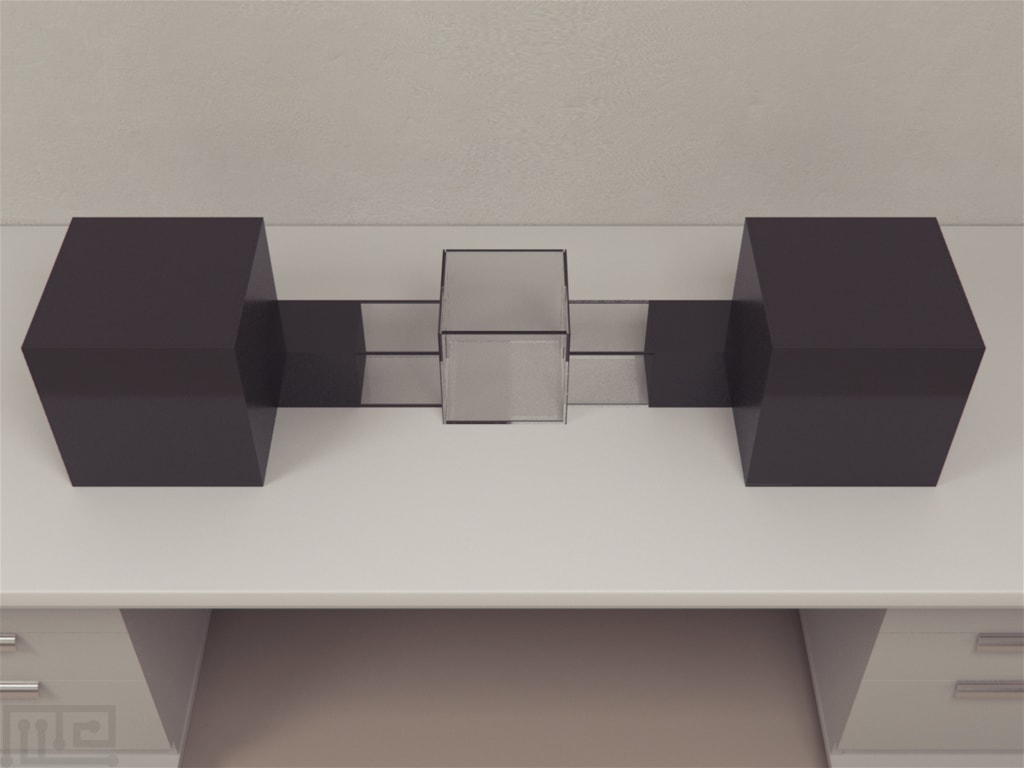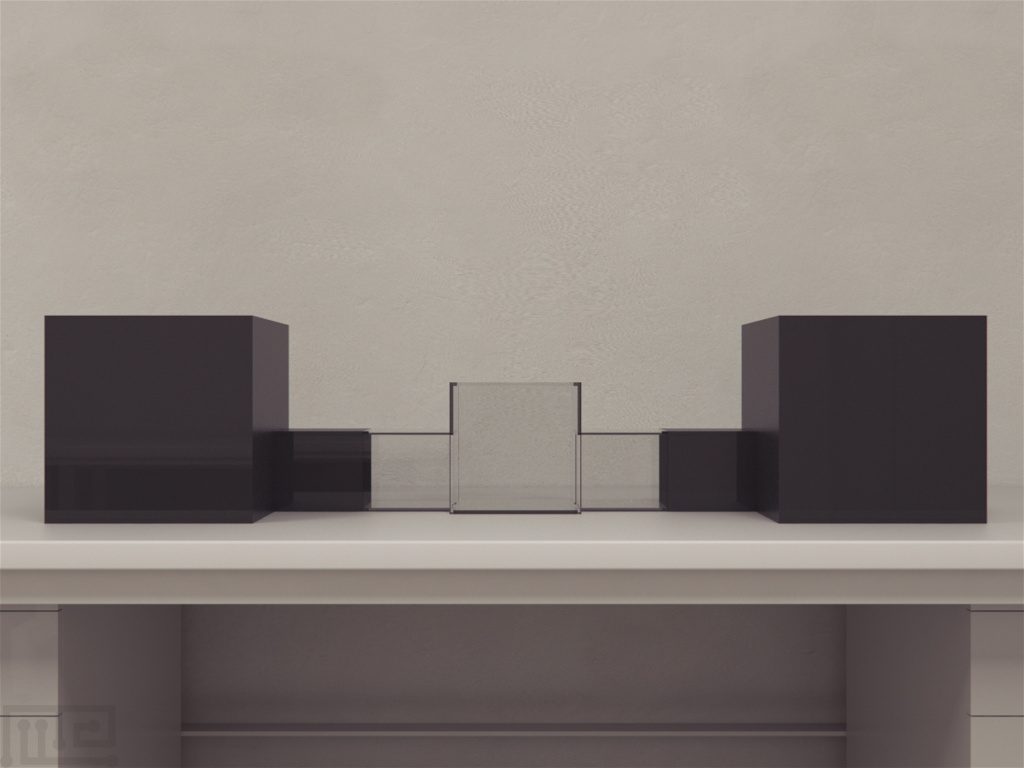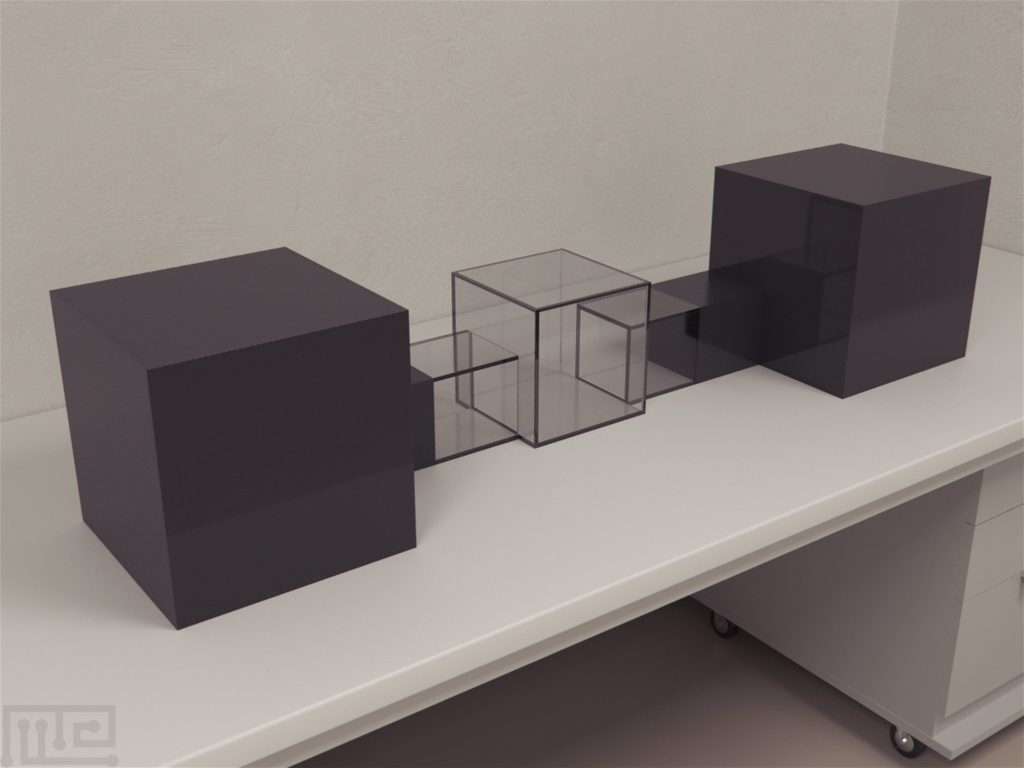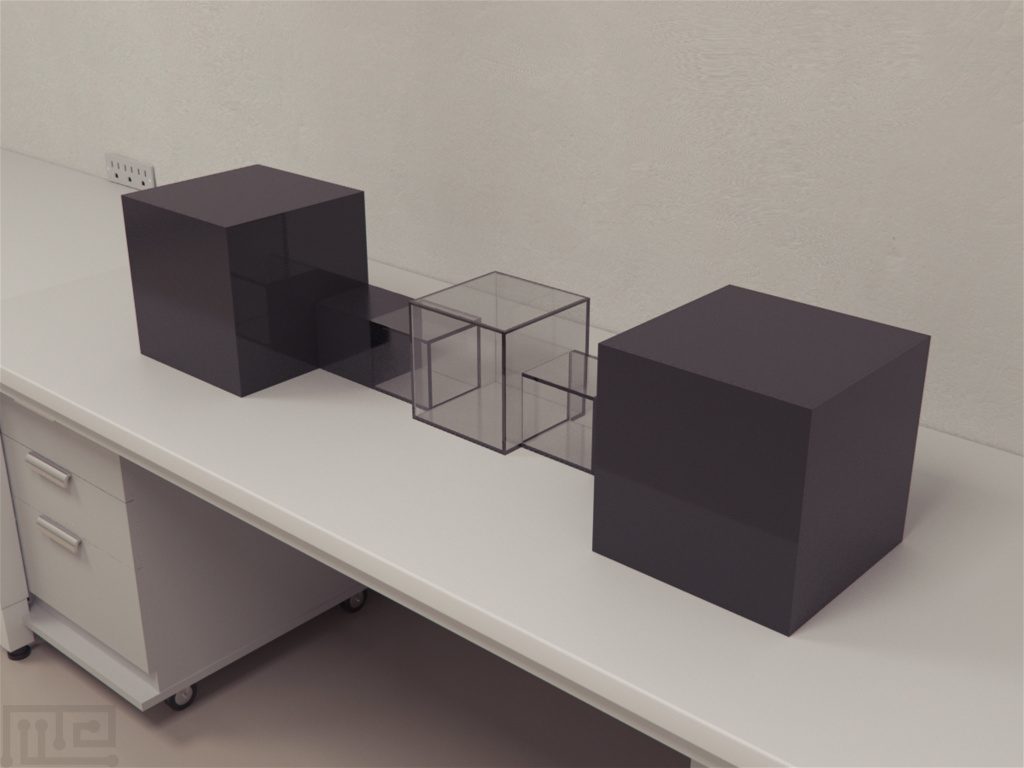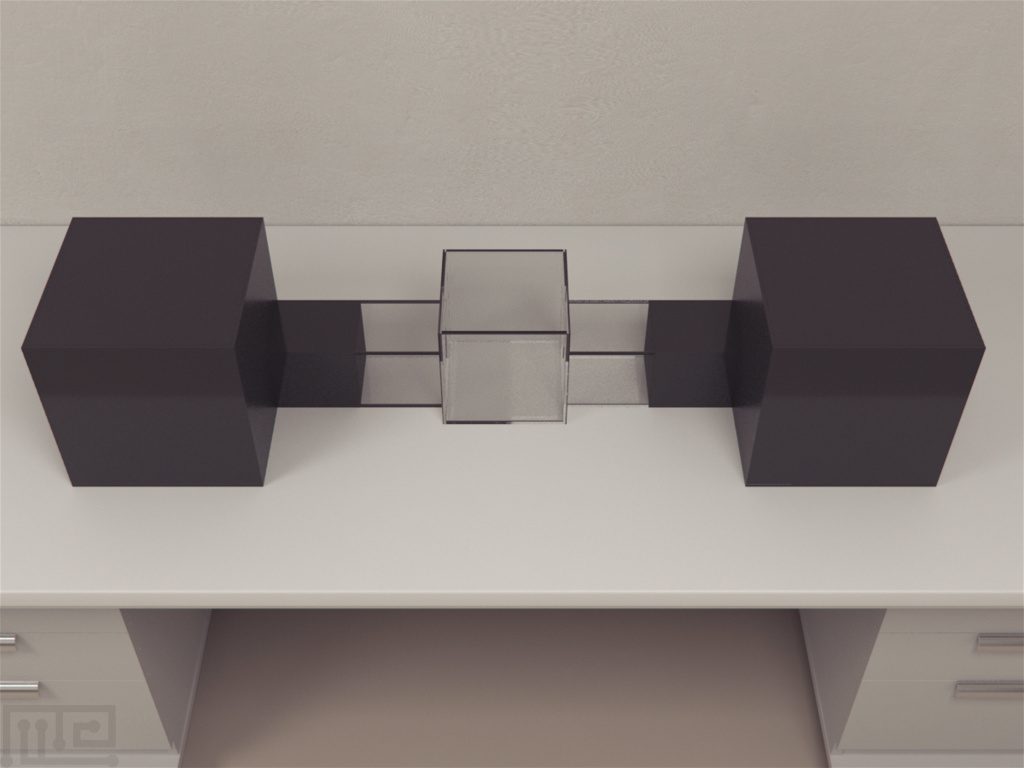This apparatus was first described by Wang et al (2014) for Marmosets, a non-human primate model. Priorr to this seminal study, little was known about light-dark preference in marmosets. The modified apparatus provided by Mazeengineers consists of three compartments:
Compartment 1: open transparent area
Compartments 2/3: two closed opaque compartments that can be light or dark
In the primary study, both adult and young marmosets explore the open area, with younger marmosets showing increased interest. When one of the closed compartments was light and the other dark, the adult marmosets showed a preference for the dark compartment. Young marmosets have no preference
Price & Dimensions
Marmoset
$ 1890
Per Month- Two closed areas and one open area.
- Open compartment with smaller transparent cube with a side-length of 20 cm.
- Connection: square tubes (inner dimensions 12 × 12 cm, length 30 cm). Half opaque and half transparent
- Closed compartment sizes: 40 cm x 40cm
Documentation
Introduction
The Light-Dark Box was developed for research in rodent models of anxiety by Cawley and Goodwin in 1980. Marmoset’s Light-Dark Box was first used by Wang et al., 2014 to quantify anxiety and exploratory behavior in marmosets. The principle of the LDB is based on the inherent inclination of rodents towards dark, enclosed spaces and their exploratory drive. Using the same testing principle of anxiety and exploratory behavior, the Light-Dark Box was adapted for use in Marmosets.
The rising popularity of Marmosets as laboratory animals is due to their unique biological characteristics; faster sexual maturation, shorter gestation periods, and a larger number of offsprings (lifetime) in comparison to the other commonly used Old World monkeys. Their ease of handling and similarity of (adult) body weight to adult rats makes the translation of rodent’s behavioral assays to Marmoset feasible. In fact, Marmosets have already been tested on T-Maze and Y-Maze (also see rodent T-Maze and Y-Maze) in which their performances were comparable with rodents.
The light-dark box is composed of an open, transparent box, that serves as an open-field, and an opaque closed box. This combination mimics the space outside and inside of a nest, respectively. A light source, which can be switched on or off, in the opaque box is used to evaluate the light-dark preference of the Marmosets. The apparatus allows not just observation of light-dark preferences but also exploratory preferences regarding enclosed and open spaces. Further, the test also provides an insight into the difference in preferences of the young and the adult Marmosets.
Apparatus and Equipment
The Light-Dark Box is made up of two cubes of 40 cm side-lengths. One of the boxes serves as the opaque closed area and is equipped with a light source that could be controlled by the experimenter. The other box is transparent, serving as the open area and is also equipped with a door to allow placement of the subject in the apparatus. The two boxes are connected via a 12 x 12 cm square tube 30 cm long which is half opaque to reduce entry of light into the closed compartment.
The modified Light-Dark Box consists of three compartments: two closed compartments and one open compartment. The closed boxes have the same dimensions and light source as described above, however, the open compartment is a smaller transparent square cube with a side-length of 20 cm. The three compartments are connected by square tubes having the same dimensions and light blocking aspect as mentioned earlier. The compartments are connected in closed-open-closed box manner, and just like the conventional LDB, the open box is equipped with the door.
Training Protocol
Marmosets should be housed in families with male/female pairs in cages with a dark nest-box hung in each cage. The nesting box mimics the nest in their natural habitat which they consider a safe space. In the experiment, the open and closed compartments mimic the space outside and inside the nest-box, respectively.
Before beginning the training, clean the entire apparatus to remove the presence of any unwanted stimuli from influencing the performance. The tests should be performed in a sound isolated test area that is well-lit. The tracking and recording of the trials can be performed using tracking and video system such as the Noldus EthoVision XT.
Training Trial (Conventional Light-Dark Box)
Turn on the light in the closed box and gently place the subject in the open box. Allow the subject 10 minutes to adapt to the apparatus. On expiration of the acclimation time, observe the subject for 30 minutes while the lamp in the closed box is still lit. After the 30 minutes have passed, turn off the light and observe the subject for another 30 minutes.
Training Trial (Modified Light-Dark Box)
As in the conventional LDB, turn on the lights of both the closed boxes and gently place the subject in the open box. Allow 10 minutes of acclimation time after which observe the subject for 30 minutes. After the 30 minutes have elapsed, randomly switch off the lamp in one of the closed compartment. Continue observation of subject for another 30 minutes.
Evaluation of light-dark preference in Marmosets
Wang et al., 2014 studied the light-dark preference of common Marmosets using conventional and modified Light-Dark Box test. In the two-chambered LDB, it was observed that regardless of the light being on or off in the closed box, the subjects spent more time in the open box. In the 3-box set-up of the modified LDB, the subjects showed no preference for either of the illuminated closed boxes during the first 30 minutes of the trial. However, when one of the lights of the closed boxes was turned off, a significant preference for the dark box was observed although the subjects did spend most of their time under both conditions in the open box.
Evaluation of the influence of age in Marmoset’s preference for light or dark spaces
To assess the role of age in the preference of light-dark spaces, the performance of weaned Marmosets was compared with the adults in the modified Light-Dark Box. The results showed that the young Marmosets had no preference between the lighted or the dark closed box. In comparison to the adults, the young Marmosets preferred to explore the open area, thus suggesting that the exploratory behavior and the light-dark preference in marmosets are age-dependent. However, the distance covered by the young Marmosets was comparatively lesser than that of the adults. (Weng et al., 2014)
Modifications
The original version of the dominance test tube is a manually handed apparatus. (G.Lindzey et.al, 1961)
A great number of modifications are made to the test tube. A significant modification is made by Wouter E, van den Berg et.al 2014.
They automated the apparatus. Their apparatus consists of a clear fiberglass tube approx. 50 cm long and 2.5 cm in diameter from inside. The tube is connected to a clear fiberglass box approx. 12 x 8 cm on each side enclosed with clear fiberglass doors. The box can be opened or closed with the aid of a manual lid.
An air valve is present at the rear end of the box approx. 1 cm above the base. Additionally, an opaque fiberglass divider is placed in the center.
The activation of each air valve and the positioning of each door are fully automated and regulated independently in real-time for automated tracking with infrared photo-detectors.
Sample Data
The data collected from the Light-Dark Box test includes:
- Distance moved
- Number of entries in each compartment
- Time spent in each compartment
Strengths & Limitations
Strengths
Marmoset Light-Dark Box is useful in studying light-dark preferences of the Marmoset primate. The LDB also allows observation of exploratory preferences of closed and open areas. The open areas mimic the space outside the nest area in their cages, while the closed space mimics the nest which is considered a safe space. The LDB further allows observation age-dependent preferences among the Marmoset. The LDB apparatus can be easily adapted to evaluate anxiety behaviors in Marmosets and other preferences such as novelty and sociability preference. The LDB can also be used to evaluate anxiogenic and anxiolytic effects of drugs and pharmacological compounds. The apparatus is simple to use and easy to construct.
Limitations
Since the study of Marmoset behaviors is still developing, the Light-Dark Box requires further validation. Handling of the primates is also a crucial aspect in obtaining accurate results. The impact of light on Marmoset’s behavior is still dubious due to limited literature available. Further, Marmosets are emotionally complex as compared to rodents. During the experiment, it is essential that no unnecessary external olfactory, visual or auditory cues are present. The housing of the Marmosets can also potentially affect the performance of the LDB experiments.
Summary and Key Points
- Light-Dark Box test can be used to study fear, anxiety and exploratory behavior in Marmosets.
- Marmosets are housed in families with a dark nest-box hung in their cages to mimic its natural habitat.
- Modified Light-Dark Box consists of three compartments: two closed, opaque compartments with a light source each and one open, transparent compartment.
- The lights in the closed boxes can be turned on/off during the trial to observe the light-dark preferences of the subject.
- Light-Dark Box test requires further validation in the behavioral study of Marmosets.
References
Crawley J and Goodwin FK (1980). Preliminary report of a simple animal behavior model for the anxiolytic effects of benzodiazepines. Pharmacol Biochem Behav, 13(2):167-70.
Wang, Y., Fang, Q., & Gong, N. (2014). A modified light-dark box test for the common marmoset. Neuroscience Bulletin, 30(3), 394–400 DOI: 10.1007/s12264-013-1426-8

